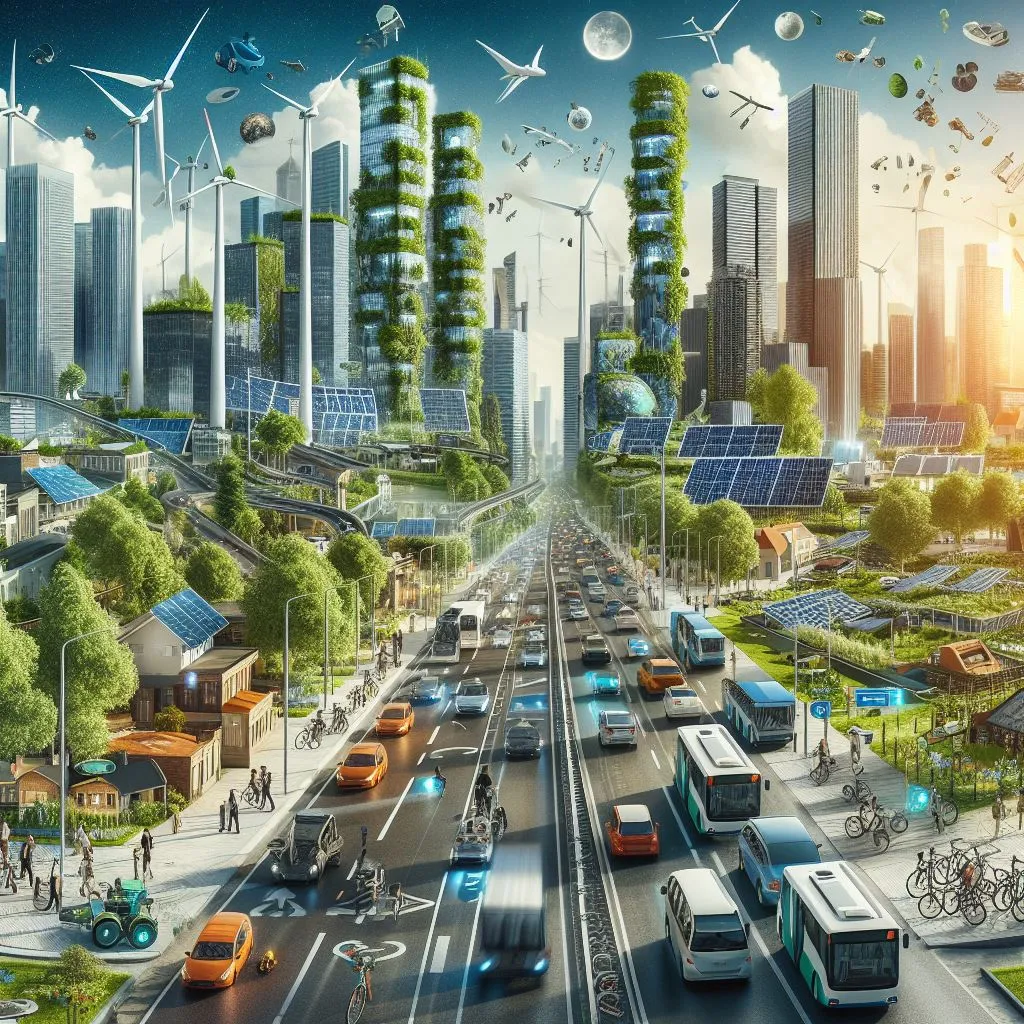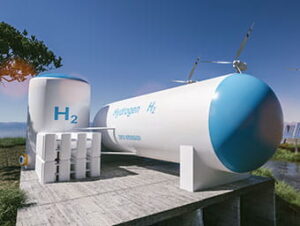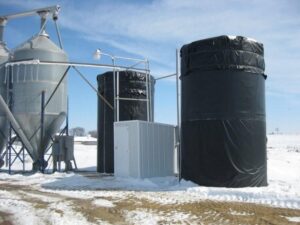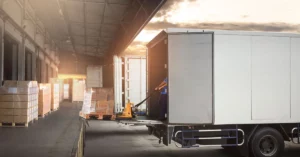The efficiency and sustainability of home heating have become focal points in the quest for environmentally conscious living and resource conservation. As we confront the challenges of climate change and seek to reduce our carbon footprint, reevaluating the methods by which we heat our homes is imperative. Efficiency in home heating refers to the optimization of energy consumption, ensuring that the energy input is converted into useful heat with minimal waste. All new methods in SVR Trace.
One significant avenue for achieving Efficiency and Sustainability is through the adoption of advanced heating technologies, such as high-efficiency furnaces and boilers. These systems utilize innovative designs and combustion processes to extract more heat from the same amount of fuel, resulting in reduced energy consumption and lower greenhouse gas emissions. Easy to get the Efficiency and Sustainability. New efficient-sustainable products available in shop. Order now!
Sustainability, on the other hand, revolves around the use of renewable and eco-friendly energy sources for heating. Embracing sustainability means moving away from traditional fossil fuels and exploring alternatives like solar, geothermal, or biomass energy. Solar thermal systems, for instance, capture the sun’s energy to produce heat, providing an abundant and sustainable source for residential heating needs. Contact us for more researching.
Smart home technologies have also entered the arena, contributing to both efficiency and sustainability. Smart thermostats enable homeowners to control heating systems remotely and can learn user preferences to optimize energy usage. These technologies not only enhance comfort but also promote energy conservation by adapting to changing conditions and user behaviors.
In the grander scheme of efficiency and sustainability, home heating plays a pivotal role in building a more eco-friendly future. Striking a balance between optimizing energy use and embracing renewable sources is key to creating homes that are not only warm and comfortable but also aligned with the principles of environmental stewardship. As we continue to innovate in the realm of home heating, the goal remains clear: to create living spaces that prioritize efficiency, sustainability, and a harmonious coexistence with our planet.
Contents about industrial products and household products available in our blog page.
- What are Technologies advanced in Efficiency and Sustainability in Heating these days?
- What are Renewable Energy Sources for Efficiency and Sustainability in Heating?
- How does Insulation and Weatherization of heating energies help Efficiency and Sustainability?
- How does Smart Home Automate for Efficiency and Sustainability in Heating?
- What are Government Incentives and Regulations for heating energies doing good for Efficiency and Sustainability?
- How is Carbon Footprint Reduced in Heating systems helping Efficiency and Sustainability?
- What are Advancements in Heating System Design helping Efficiency and Sustainability?
- How to educate Homeowners for Efficiency and Sustainability in Heating?
- What are Case Studies of Efficiency and Sustainability in Heating Implementations?
These are the questions that will be answered in this article. So lets get into it!
Table of contents
- Efficiency and Sustainability of energy in Heating Technologies
- Efficiency and Sustainability of Renewable Energy Sources for Heating
- Insulation and Weatherization and Efficiency and Sustainability of energies
- Smart Home Automation for Heating keeping Efficiency and Sustainability
- Government Incentives and Regulations for Efficiency and Sustainability
- Carbon Footprint Reduction in Heating, keeping Efficiency and Sustainability
- Advancements and Efficiency and Sustainability in Heating System Design
- Educating Homeowners for Efficiency and Sustainability in heating
- Efficiency and Sustainability in Heating Implementations
- FAQs
- Conclusion
Efficiency and Sustainability of energy in Heating Technologies

Efficiency and sustainability are paramount considerations in the realm of heating technologies as the world seeks to transition towards cleaner energy solutions. The efficiency of heating technologies is crucial in maximizing energy output while minimizing waste, making it cost-efficient , ultimately contributing to reduced environmental impact and operational costs. Sustainable heating technologies align with this by harnessing renewable sources, mitigating reliance on finite fossil fuels. That is how you help efficiency and sustainability.
One key aspect of efficient heating is the adoption of advanced systems such as heat pumps and underfloor heating cable. These devices leverage the principles of thermodynamics to transfer heat from the air, ground, or water to provide warmth doing their best to keep efficiency and sustainability at its best. Not only do heat pumps exhibit high efficiency, but they also utilize renewable energy sources, contributing to a sustainable heating solution. Some new things about efficiency and sustainability of heating cables are available!
Incorporating smart technologies, like programmable thermostats and building management systems, enhances the efficiency of heating systems by optimizing usage based on real-time conditions and user preferences. These intelligent systems reduce unnecessary energy consumption and promote a more sustainable approach to heating. Related examples: Self-regulating heating cables
Furthermore, sustainable heating technologies often integrate renewable energy sources such as solar or geothermal power. Solar thermal systems capture the sun’s energy to produce heat, offering a clean and inexhaustible source for heating applications. Geothermal heating taps into the Earth’s internal heat, providing a consistent and sustainable energy supply. Hydronic underfloor heating might interest you.
Efforts to improve the efficiency and sustainability of heating technologies are integral to addressing climate change and advancing towards a greener future. By prioritizing these principles, the heating sector can play a pivotal role in the broader transition to a more environmentally friendly and sustainable energy landscape. So science is doing good in its role for efficiency and sustainability.
Efficiency and Sustainability of Renewable Energy Sources for Heating
Efficiency and sustainability are at the forefront of the global shift towards renewable energy sources for heating, marking a pivotal step in reducing environmental impact and fostering a more sustainable energy landscape. Embracing renewable energy for heating applications offers a dual benefit of optimizing energy use while curbing reliance on finite fossil fuels. Making it beneficial to home heating industry and the environment.
Solar thermal systems stand out as a prime example of combining efficiency with sustainability. By harnessing the sun’s abundant energy, these systems convert sunlight into heat for residential and commercial heating needs. This not only reduces dependence on conventional heating methods but also ensures a clean and sustainable source of energy.
Geothermal heating, another sustainable option, taps into the Earth’s internal heat reservoirs. Ground-source heat pumps efficiently transfer heat between the ground and buildings, providing a consistent and renewable energy supply and keeping it’s safety in home heating systems. The inherently stable nature of geothermal energy contributes to both efficiency and sustainability.
Wind energy, commonly associated with electricity generation, is increasingly finding application in heating systems. Wind turbines can produce electricity to power electric heating systems or heat pumps, offering an eco-friendly alternative to traditional heating methods. It is also seen in thermostats and their role in home heating.
Efforts to enhance efficiency and sustainability also involve the integration of smart technologies, such as smart thermostats and advanced control systems. These technologies optimize heating processes, learning user behavior and adapting to real-time conditions, thereby reducing energy wastage and promoting sustainability.
In conclusion, the efficiency and sustainability of renewable energy sources for heating represent a crucial transition towards a greener, more environmentally conscious future. Embracing these technologies not only optimizes energy use but also aligns with global efforts to combat climate change and create a resilient and sustainable energy infrastructure. So their role in underfloor heating systems is significant.
Insulation and Weatherization and Efficiency and Sustainability of energies
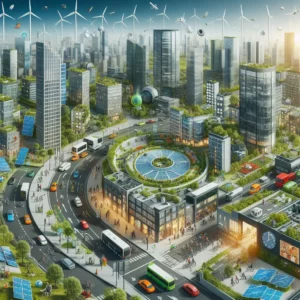
Insulation and weatherization form the backbone of efforts to enhance the efficiency and sustainability of energy use in buildings, playing a pivotal role in creating comfortable, energy-efficient, and environmentally friendly living spaces
equipped with heating cable with inactive copper.
Insulation acts as a thermal barrier, preventing the transfer of heat between the interior and exterior of a building making it beneficial for the quality and long-term support of underfloor heating systems. Adequate insulation minimizes heat loss during colder months and heat gain in warmer weather, resulting in reduced reliance on heating and cooling systems. This not only enhances energy efficiency but also contributes to cost savings and a lower environmental impact. Common insulation materials include fiberglass, cellulose, and foam, each with unique properties that contribute to creating a well-insulated building envelope.
Complementing insulation, weatherization involves sealing gaps and addressing areas vulnerable to air infiltration. This process includes sealing windows, doors, and any potential openings where conditioned air can escape or unconditioned air can enter. By minimizing air leakage, weatherization ensures that heating and cooling systems operate more efficiency and sustainability, optimizing their performance and reducing overall energy consumption. Constant wattage heating cable might help!
Efficiency and sustainability in energy use are inherently linked to insulation and weatherization practices. When buildings are well-insulated and properly weatherized, the need for constant heating and cooling diminishes. This results in a more consistent indoor climate, reducing the burden on HVAC systems and contributing to energy conservation.
Moreover, the integration of insulation and weatherization aligns with efficiency and sustainability goals by decreasing the carbon footprint associated with energy consumption. A well-insulated and weatherized building requires less energy for temperature regulation, translating to lower greenhouse gas emissions and decreased reliance on non-renewable energy sources. Heating cable with two power ratings can be useful.
In conclusion, the efficiency and sustainability of energies are significantly influenced by the thoughtful application of insulation and weatherization practices. As we strive for more eco-friendly living, these measures become crucial not only for reducing energy consumption but also for creating resilient, sustainable, and comfortable living spaces.
Smart Home Automation for Heating keeping Efficiency and Sustainability
Smart home automation has revolutionized the way we approach heating, offering a dynamic synergy between efficiency and sustainability and modern convenience. This innovative technology integrates intelligent systems into heating processes, allowing for precise control, optimization, and conservation of energy. This might be used in heat tracing cables.
At the core of smart home heating is the advent of smart thermostats. These devices go beyond traditional temperature control, incorporating learning algorithms that adapt to user behavior and preferences over time. By analyzing patterns, occupancy, and external weather conditions, smart thermostats optimize heating schedules to ensure comfort while minimizing energy consumption. This adaptability not only enhances efficiency and sustainability but also contributes to cost savings and reduced environmental impact. Drain-Line heating cable might interest you.
Remote accessibility is a hallmark feature of smart home heating systems. Through mobile applications, homeowners can monitor and control heating settings from anywhere, allowing for real-time adjustments based on changing circumstances or unexpected schedule shifts. This not only adds a layer of convenience but empowers users to actively manage their energy use, promoting a more sustainable approach to home heating. We invite you to a brief story of home heating.
Artificial Intelligence (AI) plays a pivotal role in the efficiency of smart heating systems. Predictive modeling and adaptive learning enable these systems to anticipate heating needs. AI algorithms analyze data from various sources, including historical usage patterns and external factors, ensuring that the heating system operates at optimal efficiency without unnecessary energy wastage.
Incorporating renewable energy sources further solidifies the sustainability of smart home heating. By integrating with solar panels or geothermal systems, smart heating solutions can tap into clean and renewable energy, aligning with broader environmental goals.
In conclusion, smart home automation for heating embodies a harmonious blend of efficiency and sustainability. These technologies not only streamline daily life but also contribute to a more intelligent and eco-friendly approach to residential heating, paving the way for a greener future. As the field continues to evolve, the intersection of smart home automation with energy efficiency and sustainability is poised to redefine how we experience and manage heating in our homes.
Government Incentives and Regulations for Efficiency and Sustainability
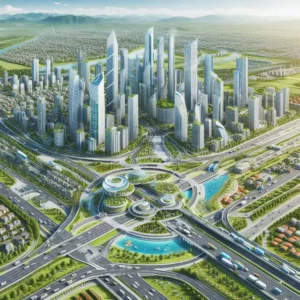
Government incentives and regulations play pivotal roles in fostering efficiency and sustainability across various sectors, aligning national objectives with global efforts to address climate change and promote responsible resource use and protecting hazard zones in the underfloor heating industry.
Incentives, such as tax credits, grants, and subsidies, serve as powerful motivators for businesses and individuals to adopt sustainable practices. Governments often encourage energy-efficient technologies, renewable energy adoption, and environmentally friendly initiatives by offering financial rewards, making sustainable choices more economically viable.
Conversely, regulations establish standards and guidelines that enforce efficiency and sustainability practices. Building codes, emission limits, and energy efficiency standards are examples of regulatory measures that ensure industries and individuals adhere to environmentally conscious practices. These regulations create a framework for responsible resource utilization and waste reduction.
In the realm of efficiency, governments frequently introduce incentives for industries to adopt energy-efficient technologies and practices, like ones used in underfloor heating straps. This not only promotes cost savings for businesses but also reduces overall energy consumption, contributing to environmental conservation.
Sustainability-focused regulations address broader environmental concerns, such as emission reduction targets and waste management guidelines. By enforcing sustainability measures, governments work to mitigate ecological impacts, protect natural resources, and transition towards a more sustainable and resilient future for the industry and underfloor heating systems.
Together, government incentives and regulations form a powerful duo, driving the adoption of practices that cause efficiency and sustainability. This comprehensive approach ensures a balance between encouraging positive behaviors through incentives and mandating responsible practices through regulations, fostering a collective commitment to a greener and more sustainable global community.
Carbon Footprint Reduction in Heating, keeping Efficiency and Sustainability
Reducing carbon footprint in heating is a crucial endeavor for fostering efficiency and sustainability and combating climate change. This pursuit involves optimizing efficiency and embracing sustainable practices to minimize the environmental impact associated with heating processes. Specially in oil and gas industry and underfloor heating.
Efficiency gains are paramount in reducing carbon footprint. Upgrading to energy-efficient heating systems, such as high-efficiency furnaces or heat pumps, ensures that more energy is converted into usable heat, translating to lower carbon emissions per unit of energy consumed, this causes various types of underfloor heating system. Smart technologies, like programmable thermostats, play a role by optimizing heating schedules and preventing unnecessary energy use, further enhancing efficiency.
Transitioning to renewable energy sources is integral to carbon footprint reduction in heating. Embracing solar thermal systems, geothermal heat pumps, or biomass heating can significantly decrease reliance on fossil fuels. These technologies harness sustainable energy, thereby reducing the carbon intensity of heating processes and it helps to get the best efficiency and sustainability.
Insulation and weatherization contribute by minimizing heat loss, reducing the need for constant heating, and consequently, lowering overall energy consumption. Well-insulated homes retain heat more effectively, promoting energy efficiency and sustainability.
Carbon offset initiatives, where individuals or businesses invest in projects that reduce or capture greenhouse gas emissions, can complement direct carbon footprint reduction efforts in heating. These initiatives support projects like reforestation or renewable energy production, effectively counteracting the emissions associated with heating.
In conclusion, carbon footprint reduction in heating involves a multifaceted approach encompassing efficiency and sustainability improvements, the adoption of sustainable technologies, and conscious energy consumption practices like heating straps: efficient and versatile and By embracing these strategies, individuals and industries alike can contribute to a more sustainable and climate-resilient future.
Advancements and Efficiency and Sustainability in Heating System Design
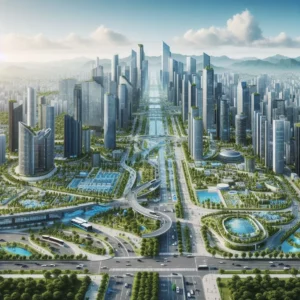
Advancements in heating system design are reshaping the landscape of energy efficiency and sustainability, driving innovation towards greener and more eco-friendly solutions. Like radiant floor heating. These progressive developments are crucial as the world endeavors to address climate change and transition to sustainable energy sources.
One notable advancement is the integration of smart technologies into heating systems. Smart thermostats, for instance, are equipped with learning algorithms that adapt to user behavior, optimizing heating schedules based on preferences and real-time conditions. This not only enhances comfort but also minimizes energy wastage, contributing to overall efficiency and sustainability.
Improved insulation materials and techniques are another area of advancement. Cutting-edge insulation materials, such as aerogels and advanced foams, provide superior thermal resistance, reducing heat transfer and enhancing the overall efficiency of heating systems, used in underfloor heating film. Additionally, innovative building designs that prioritize airtightness and insulation contribute to minimizing energy loss.
Advancements in heat pump technology are transforming the efficiency and sustainability of heating systems. Modern heat pumps are designed to extract heat from ambient air, ground, or water sources, providing a highly efficient method of space heating. This approach not only reduces reliance on conventional heating methods but also utilizes renewable energy, aligning with sustainability goals.
Incorporating renewable energy sources, such as solar or geothermal, into heating system designs is becoming more commonplace. Solar thermal systems capture sunlight to produce heat, offering a clean and sustainable alternative. Geothermal heat pumps leverage the stable temperatures beneath the Earth’s surface, providing consistent and renewable heating, useful in household underfloor heating.
Efforts to advance heating system efficiency and sustainability also extend to materials with improved heat transfer properties and combustion technologies that enhance energy conversion. By combining these advancements, heating systems are becoming more efficient, environmentally friendly, and aligned with the principles of sustainability.
In conclusion, the ongoing advancements in heating system design represent a promising trajectory towards enhanced efficiency and sustainability. As these technologies continue to evolve, they contribute significantly to creating a more energy-efficient, environmentally conscious, and sustainable future for heating solutions.
Educating Homeowners for Efficiency and Sustainability in heating
Educating homeowners about efficiency and sustainability in heating is pivotal for fostering environmentally conscious practices and reducing energy consumption. Empowering homeowners with knowledge ensures informed decision-making, promoting the adoption of eco-friendly technologies and behaviors causing in health benefits of underfloor heating systems.
Firstly, understanding the significance of energy efficiency in heating is essential. Homeowners can be educated about the benefits of upgrading to energy-efficient heating systems, such as high-efficiency furnaces or heat pumps and making kitchens elevated: underfloor heating benefits. These systems not only reduce energy bills but also contribute to lower carbon emissions, aligning with broader efficiency and sustainability goals.
Awareness about proper insulation and weatherization is crucial. Homeowners can learn how adequate insulation, sealing air leaks, and maintaining a well-insulated building envelope minimize heat loss, improving overall heating efficiency and sustainability. Simple measures like using draft stoppers for doors and windows can make a significant impact.
Educating homeowners about smart technologies, such as programmable thermostats, encourages the adoption of intelligent heating management. These devices optimize heating schedules, adapt to user preferences, and prevent unnecessary energy use, ultimately contributing to a more sustainable and efficient heating routine, helping the ease and comfort of underfloor heating systems.
Promoting the use of renewable energy sources, like solar or geothermal heating, is another key aspect. Homeowners can be informed about the benefits of harnessing clean and sustainable energy for heating needs, reducing reliance on fossil fuels.
Additionally, educating homeowners about government incentives and rebates for energy-efficient upgrades provides a financial incentive to make environmentally conscious choices. This might make you interested in installation process of underfloor heating systems.
In conclusion, a well-informed homeowner is a catalyst for positive change in the realm of heating efficiency and sustainability. By imparting knowledge about energy-efficient technologies, sustainable practices, and available incentives, homeowners can play a vital role in creating more eco-friendly homes and contributing to a greener, more sustainable future.
Efficiency and Sustainability in Heating Implementations
Examining case studies of efficiency and sustainability in heating implementations provides valuable insights into successful strategies, innovative technologies, and the real-world impact of adopting eco-friendly heating solutions.
One notable case study involves the retrofitting of buildings with advanced insulation and smart heating systems. Like silo heating and heating cables. In a commercial building in urban settings, the implementation of high-performance insulation materials and the installation of smart thermostats resulted in a substantial reduction in energy consumption. The intelligent heating system adapted to occupancy patterns, optimizing temperature settings based on real-time data and user behavior.
Another case study focuses on district heating projects leveraging combined heat and power (CHP) technologies. By integrating cogeneration systems with district heating networks, these projects efficiency and sustainability produce both heat and electricity, maximizing energy utilization. This approach has proven successful in urban areas, providing a sustainable and cost-effective solution for meeting the heating needs of entire communities.
In the residential sector, solar thermal systems have been deployed in numerous case studies to harness the sun’s energy for water and space heating. These implementations showcase the feasibility of integrating renewable energy into everyday heating practices, reducing reliance on traditional energy sources and lowering carbon footprints, related product: parallel silicone heating cable.
Furthermore, geothermal heat pump installations have demonstrated efficiency and sustainability in various climates. By utilizing the stable temperatures beneath the Earth’s surface, these systems efficiently extract or dissipate heat, providing consistent and eco-friendly heating and cooling solutions for residential and commercial buildings. Making it related to hydrogen processing and heat-tracing.
In summary, case studies highlight the diverse ways in which efficiency and sustainability in heating can be achieved. Whether through smart technologies, district heating projects, solar thermal systems, or geothermal heat pumps, these real-world examples showcase the transformative potential of adopting environmentally conscious heating solutions.
FAQs
Q1: What is the significance of energy efficiency and sustainability in everyday life?
A1: Energy efficiency is crucial as it reduces energy consumption, lowers utility bills, and minimizes environmental impact by decreasing the demand for fossil fuels.
Q2: How can I make my home heating more sustainable?
A2: You can make your home heating more sustainable by upgrading to energy-efficient systems, improving insulation, using smart thermostats, and incorporating renewable energy sources like solar or geothermal helping efficiency and sustainability.
Q3: What role do smart thermostats play in energy efficiency?
A3: Smart thermostats optimize heating and cooling based on user preferences and real-time conditions, reducing energy waste and enhancing overall efficiency.
Q4: How does insulation contribute to energy efficiency and sustainability?
A4: Proper insulation minimizes heat transfer, keeping indoor spaces comfortable with less reliance on heating or cooling systems, thus improving energy efficiency.
Q5: What are some renewable energy sources suitable for heating?
A5: Solar thermal systems, geothermal heat pumps, and biomass heating are examples of renewable energy sources suitable for heating applications.
Q6: How can district heating projects enhance efficiency and sustainability?
A6: District heating projects, especially those incorporating combined heat and power (CHP) technologies, efficiently produce both heat and electricity, maximizing energy utilization and reducing environmental impact.
Q7: What are the benefits of adopting renewable energy in heating?
A7: Adopting renewable energy in heating reduces dependence on fossil fuels, lowers carbon emissions, and contributes to a more sustainable and eco-friendly energy landscape.
Q8: How can homeowners contribute to efficiency and sustainability in heating?
A8: Homeowners can contribute by upgrading to energy-efficient systems, practicing proper insulation and weatherization, using smart technologies, and exploring renewable energy options.
Q9: Are there government incentives for improving energy efficiency and sustainability at home?
A9: Yes, many governments offer incentives such as tax credits, rebates, and grants to encourage homeowners to adopt energy-efficient practices and technologies.
Q10: How do case studies provide insights into efficiency and sustainability?
A10: Case studies offer real-world examples of successful efficiency and sustainability implementations, showcasing strategies, technologies, and their positive impact on energy consumption and environmental preservation.
Conclusion
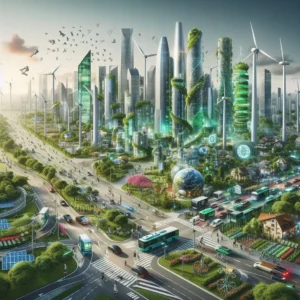
In conclusion, the underfloor heating industry stands at the forefront of the global pursuit of efficiency and sustainability in heating technologies. This innovative approach to space heating has demonstrated remarkable advantages, aligning with the imperative to reduce energy consumption, minimize environmental impact, and create more sustainable living and working spaces.
Efficiency is a cornerstone of underfloor heating systems. The even distribution of heat across large surface areas (open space heating and heating cables) allows for lower water temperatures compared to traditional heating methods, resulting in increased energy efficiency and sustainability. The radiant heat emitted from the floor ensures optimal comfort with reduced energy consumption, reflecting a commitment to both user well-being and resource conservation.
Moreover, underfloor heating systems seamlessly integrate with smart home technologies, fostering a new era of intelligent heating management. Smart thermostats and zoning capabilities enable precise control over individual rooms, adapting to user preferences and occupancy patterns. This level of control not only enhances comfort but also contributes to substantial energy savings, promoting a more sustainable approach to heating. Making loading and unloading process and heating cable vital to know.
The sustainability of underfloor heating extends beyond efficiency gains. Many systems can be powered by renewable energy sources, such as geothermal or solar, further reducing reliance on non-renewable energy. The minimal environmental impact of these systems, coupled with their long lifespan and low maintenance requirements, positions underfloor heating as a efficiency and sustainability helping choice in building design and construction. (maintenance tips for underfloor heating systems)
As case studies continue to emerge, showcasing successful implementations in residential and commercial settings, the underfloor heating industry exemplifies the positive intersection of efficiency and sustainability. Through ongoing research, technological advancements, and widespread adoption, underfloor heating is poised to play a pivotal role in shaping the future of environmentally conscious heating solutions, contributing to a more sustainable and resilient global energy landscape.

